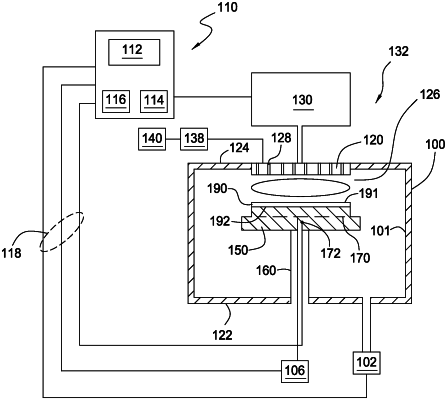| CPC C23C 16/0272 (2013.01) [C23C 16/32 (2013.01); C23C 16/45557 (2013.01); C23C 16/513 (2013.01); C23C 16/52 (2013.01)] | 20 Claims |

|
1. A method of forming a tungsten carbide film, comprising:
forming, by plasma-enhanced chemical vapor deposition (PECVD), a tungsten carbide initiation layer directly on a silicon-containing surface of a substrate at a first deposition rate; and
forming a tungsten carbide film on the tungsten carbide initiation layer at a second deposition rate, wherein the second deposition rate is greater than the first deposition rate.
|